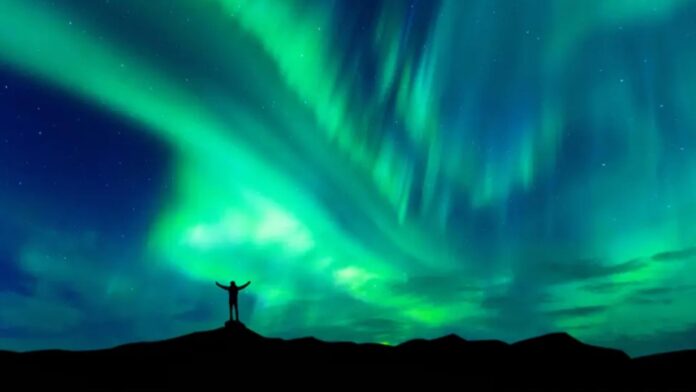If ever there was a time to head to the mountains, today is the day.
Stargazers were treated to an unprecedented sight in Southern California overnight: the Aurora Borealis. The Northern Lights were seen from the local mountains, a rare treat thanks to a geomagnetic solar storm. The ongoing solar storm has the potential to disrupt communications, but it may also bring the Northern Lights back again tonight for an encore.
Cloud cover made it a challenge to see the spectacular light show across much of Southern California Friday night, but stargazers in some deserts and the San Gabriel and San Bernardino Mountains were blessed with a dazzling sky show last night.
The best viewing spots to take in the phenomenon are the mountains and deserts, away from the artificial lights of densely populated areas.
“This is absolutely unprecedented to see this in Southern California,” photographer Mark Girardeau of Orange County Outdoors wrote on Instagram at about 1 a.m. Saturday, accompanied by a photograph taken near Mountain High in Wrightwood, high up in the San Gabriel Mountains.
“It’s viewable as far south as San Diego and Mexico,” Girardeau added. “It would be visible from Orange County if it weren’t for the clouds.”
Girardeau was joined by other local photographers including Patrick Coyne of Torrance.
“Last night absolutely felt like a dream. We had the privilege of seeing the Northern lights here in Southern California!” Coyne posted, along with a video showing the dazzling display. “The geomagnetic storm had a KP index of 8 which is why we got to see it all the way down here at Mountain High. The entire sky showed this gorgeous red/pink color and you could absolutely see it with your eyes.”
The lights were caused by an unusually strong geomagnetic storm that erupted from a sunspot cluster on the sun.
The NOAA said Saturday that “storming of extreme intensity would continue through at least Sunday,” and “several CMEs (coronal mass ejections) are anticipated to merge and arrive at Earth on May 12th.”
The Kp index, the measure of the strength of a burst of solar energy, is predicted to be at 8 overnight Friday. Auroras become likely with a Kp index of 5.
“Watches at this level are very rare,” NOAA said. “This is an unusual event.”
The last time NOAA issued a watch for a “severe” geomagnetic storm was in January 2005.
A severe geomagnetic storm can also trigger GPS problems, interfere with satellite communications, cause high-frequency blackouts, disrupting power and communications.

